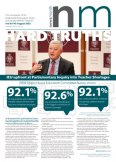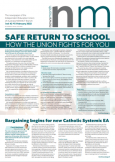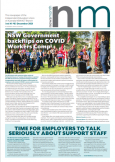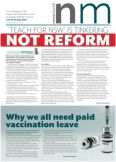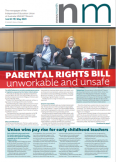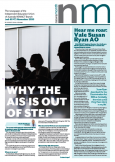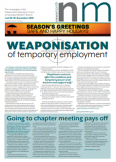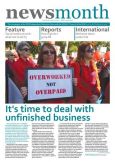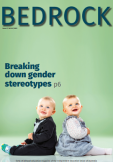
When I first started working in superannuation in 1999, I was astonished to learn of the wide gap between men and women’s superannuation account balances at retirement.
In a study conducted by KPMG it was noted that the super balance for men aged 60-64 is $204,107; for women in the same age group it is $146,900 – a gap of at least 25%.
The causes of this unfair and unsatisfactory result were many as the design of the Super Guarantee (SG) was based on regular, full-time work over a lifetime.
What are the causes?
The first and most obvious cause for the difference is Australia’s national pay gap between men and women which currently sits at 21.7%.
The Workplace Gender Equality Agency (WGEA) notes that for every $1 on average a man makes, women earn 78c. Over the course of a year, this adds up to $26,393 (see also p4).
The federal government has recently taken steps to address this inequity with companies with over 100 employees required to report to WGEA. What will be done with this information is yet to be seen but it is hoped that salary irregularities once identified should be fixed.
Another cause for the gap is that women are more likely to work in professions that involve caring for others, such as nursing, teaching and aged care. The recent 25% pay rise in the aged care sector will help to address this. These professions are not highly paid and governments have been reluctant to raise salaries – look at the hard-fought strikes in 2022 for better pay and conditions for teachers, support staff and nurses.
Women are also more likely than men to take time out of the workforce for unpaid work such as caring for family members. This could result in part-time work or lower paying jobs. And, of course, less super at retirement.
What can be done?
As governments are now aware of the super gap, some steps have already been taken to reduce it. WGEA and groups such as Women in Super (www.womeninsuper.com.au) are producing information to raise awareness of the super gap and in some cases to lobby the government for solutions.
A good starting point is attaching super to the Paid Parental Leave Scheme. On 7 March, the federal government announced superannuation will now be paid on government-funded parental leave. This is an essential step to help address the retirement poverty suffered by many women workers.
Another government initiative to fix the gap is the Low Income Super Tax Offset (LISTO). This measure was put in place to top up or assist low-paid workers in building up their retirement balances. The income cap is $37,000 and anyone earning less than this amount can receive a top up from the government of up to $500 per year. It is based on a sliding scale depending on the amount of low-income salary; the lower the salary, the greater the percentage of the cap of $500.
A great way to improve this scheme would be to raise LISTO to $45,000. This would enable thousands of low-paid workers to receive government payments to improve their retirement benefit and have more time in the market to benefit from compounding interest.
Topping-up super
Apart from these two government schemes, individuals can top up their own super and many choose to do this, especially after age 50. Salary sacrifice allows fund members to contribute pre-tax money into super which is taxed at 15% rather than marginal tax rates.
Salary sacrifice contributions are currently capped at $27,500 per annum and this includes employer contributions. However, the unused portion of your concessional cap from the previous five financial years (beginning 2018-19) can be used as a top-up if your super balance was below $500,000 on 30 June 2023 – a recent initiative to assist low account holders to build their super.
And there is always the possibility of topping up super with a lump sum – as in the case of an inheritance or sale of a property. Again, there are annual caps for lump-sum contributions so it’s a good idea to speak to a licensed financial planner before making any large contributions.
Women’s super is moving in a better direction as governments look to fix or at least reduce the gap so we can all enjoy a dignified and comfortable retirement.
















